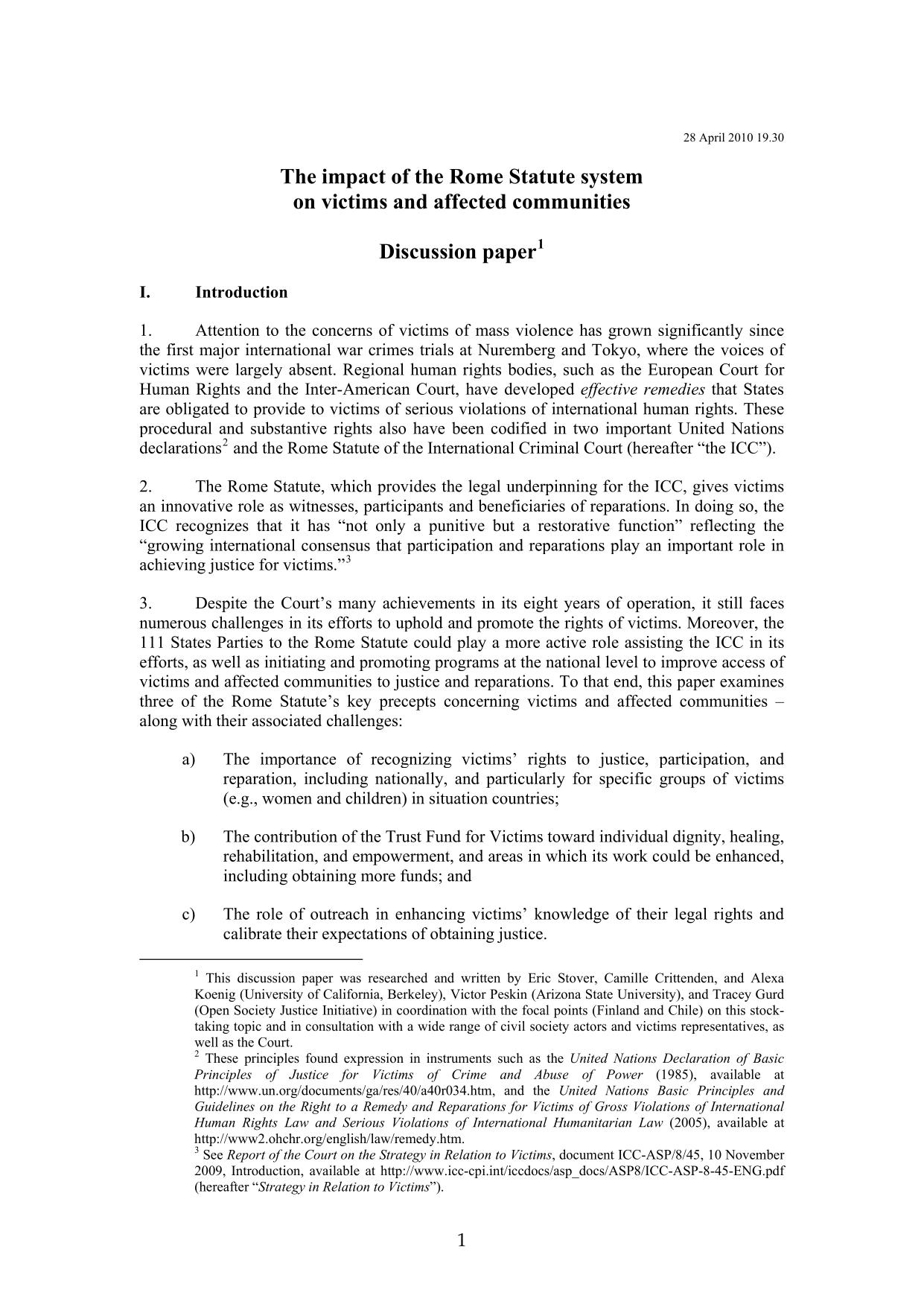The Impact of the Rome Statute System on Victims and Affected Communities
Download PDFSummary
Attention to the concerns of victims of mass violence has grown significantly since the first major international war crimes trials at Nuremberg and Tokyo, where the voices of victims were largely absent. Regional human rights bodies, such as the European Court for Human Rights and the Inter-American Court, have developed effective remedies that States are obligated to provide to victims of serious violations of international human rights. These procedural and substantive rights also have been codified in two important United Nations declarations and the Rome Statute of the International Criminal Court (hereafter “the ICC”). The Rome Statute, which provides the legal underpinning for the ICC, gives victims an innovative role as witnesses, participants and beneficiaries of reparations. In doing so, the ICC recognizes that it has “not only a punitive but a restorative function” reflecting the “growing international consensus that participation and reparations play an important role in achieving justice for victims.” Despite the Court’s many achievements in its eight years of operation, it still faces numerous challenges in its efforts to uphold and promote the rights of victims. Moreover, the 111 States Parties to the Rome Statute could play a more active role assisting the ICC in its efforts, as well as initiating and promoting programs at the national level to improve access of victims and affected communities to justice and reparations. To that end, this paper examines three of the Rome Statute’s key precepts concerning victims and affected communities – along with their associated challenges.
